Roughly half a year after Samsung released the Innovator Edition of its Gear VR virtual reality headset in December 2014, the company made it obsolete.
Despite the relatively youth of the original, which ran off the 5.7-inch Galaxy Note 4, the South Korean tech giant showed off a revised version fit for its latest 5.1-inch Galaxy S6 smartphone at Mobile World Congress in March. It soon sold at Samsung and Best Buy.
The goggles were born out of Samsung’s collaboration with Oculus, the Facebook-owned company known for triggering the tech industry’s current fascination with virtual reality. But unlike that predecessor, which connected to computer systems with cables, the Gear VR was self-contained and powered by a phone, which was seated inside the gadget.
See also: Samsung’s Galaxy S6 And Galaxy S6 Edge Get Glassy And Curved
Smartphone-based VR comes with plenty of pros and cons: On one hand, it’s convenient and less complicated. On the other, processing power and graphics rendering can be pretty limited.
But, in light of Samsung’s lightning-quick product evolution, another common-sense concern seems to be springing up: As new models and different display sizes bombard the market, could phone-driven goggles wind up being subject to fast-moving smartphone churn? That hardly seems practical.
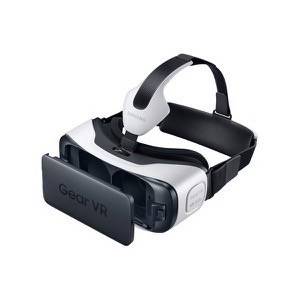
I recently spoke with Nick DiCarlo, Samsung’s vice president and general manager of VR, to understand the company’s mobile VR strategy, as well as to get DiCarlo’s take on virtual reality’s potential across various areas—including education and cinema.
Samsung has a lot of goals with its Gear VR platform, not least of which is to send it out into the world, so it can see what creative developers do with it. It’s not the only one. Shortly after our talk, Google addressed its own VR initiative with announcements for its Cardboard project at Google I/O event.
Here’s what Samsung has in mind.
See also: Oculus Will Let You Grab Virtual Reality With Both Hands
ReadWrite: Why did the Gear VR get updated when the first version was only a few months old? If it was a matter of phone sizes differing, wouldn’t an adapter have worked instead?
Nick DiCarlo: The key thing is that we want to make it available to people, and VR is one of these things that people didn’t think was possible on a mobile phone for a long time. The original Gear VR proved that it was possible. Now we want to make it available to more people via the very popular Galaxy S series.
One of the things with VR is that it’s very technically complex, right? Not only on the computing side, but on the optics side—and then, you know, it’s strapped to your face, so on the human interface side. There are a lot of aspects that wouldn’t necessarily be thought of as tech, but technology to make things really comfortable.
When the screen size changes so dramatically between the Note 4 and the Galaxy S6, it’s hard to make it universal and really high quality. The quality bar that the first Gear VR set just wasn’t really feasible. That’s partially why we explained to people, when the original device launched, [that] it was an Innovator Edition. You can expect to see a continuous evolution. The software moves forward, so you’re not going to miss very much. We’re just trying to make it more accessible to more people.
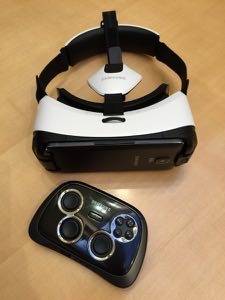
RW: I assume there will be more high-end Samsung smartphones this year. So will there also be more Gear VR headsets to match?
ND: I’m not in a position to confirm any new devices or new features—definitely talking about the Galaxy S6 at this point. But I think the thing to think about with VR is, it’s still a really, really new medium. So the first thing is, we think of the quad HD display that’s on the Note 4 and the Galaxy S6 as a minimum for VR, to keep the screen door effect in a comfortable range. We need really advanced processing capability to do VR at 60 hertz, and some of the PC guys are even higher, like 75 hertz or 90 hertz.
Then there’s really great motion tracking to make it comfortable. We think of Gear VR as being comfortable for most, because of the smoothness and the really low latency of the motion. [Editor’s note: When tech makers don’t get tracking and latency right, the result can make some people very queasy.] You need “a lot of phone” to power that. What we’ve said from the beginning is that the Note 4 is the minimum. You think of the Note 4 as a beast of a phone, right? But we’re defining it as the minimum for mobile VR, and we’ll move up from there. S6 has a better processor than the Note 4, pixel density is higher, resolution is identical.
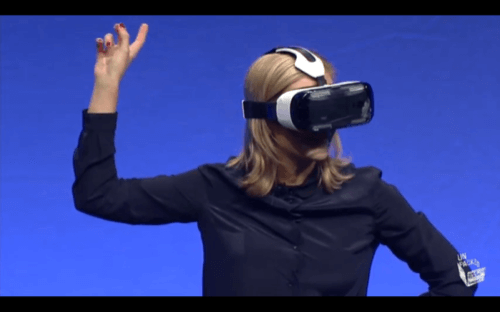
You can imagine how that evolves over time. Just compare the Galaxy S6 to the Galaxy S1 from a compute perspective, and a screen resolution perspective, for that matter. You get a sense for the kind of changes that you can expect to see, and that’s the basics.
Now think about virtual reality. [Current Gear VR models are] not the last word in mobile VR. There’s lots of potential for technological advancement in the future—and that includes better lenses, better fit to your face, better lots of things.
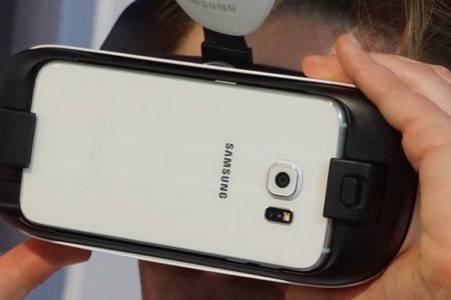
RW: The latest Gear VR outfitted for the S6 is also known as an Innovator Edition. So who is the target audience for Innovator Editions in general?
ND: The Innovator Edition is targeted, of course, at VR developers, because they need to be able to get their hands on devices.
There’s also a very large and passionate enthusiast community. There are VR Meet Ups all over the country—Austin, New York, Philadelphia, Denver, every city you could think of. So there’s this really passionate VR community out there [comprising] maybe hobbyist developers. Or maybe they’re interested in the space because of movies from the past. They’re on it, they’re the ones who are buying and aggressively using the concept now.
We’re starting to move deeper into the innovator population, as more people try VR. We put it up in a dozen different events around the country during the first quarter of the year. We gave thousands of people their first virtual reality experiences. You get exposed to it and say, “Okay, am I the kind of person who’s interested in this very futuristic, new technology?” and people sort of self-select towards. [They say,] “Yes, I’m ready to buy in on that.”
See also: Google Jump Will Revolutionize Making Virtual-Reality Experiences
Labeling it as Innovator Edition says, “Hey, this is different than TV that’s existed for 60 years. There’s going to be a lot of changes.” That’s really what the Innovator Edition signals.
RW: I’ve covered video games, so when I see a device like this with a unique software platform, I compare it to a game console. I think, “This is going to stick around for a couple of years.” But then I think that there are going to be so many different hardware versions with changing technical specifications, and wonder about the complexity for developers.
Yeah, I understand. I’m borrowing from what [Oculus CTO] John Carmack has said, because he’s a big supporter of mobile VR: The benefit of powering virtual reality with a smartphone is that almost everybody who has a smartphone could be a target market.
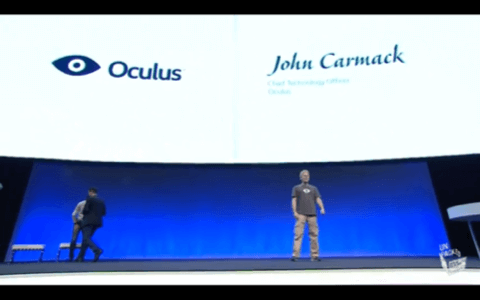
Because it’s a Samsung-plus-Oculus thing together, you’ve got consistent engineering back and forth, from a compatibility management perspective. So it’s sort of like a hybrid console model. Where processors move quickly [and] Android versions continue to improve, Oculus continues to refine and improve the virtual reality layer on top of that.
But it all sort of works together to be console-like. It’s not dead frozen for five to seven years, but working within a family system. Not the full breadth of every phone in the marketplace, [but] for legitimate hardware reasons: processing power, screen resolution, AMOLED refresh rate advantages, things like that, to give a target to go on.
That’s the model. The other thing to think about: Gear VR and virtual reality itself does not have the same maturity as the console market in 2015. [VR is on par with] the console market from when I was a kid. It’s a new and emerging space that’s going to build its own conventions over time. I think it’s going to be interesting, for sure.
RW: That’s an interesting analogy. When you were a kid, there was a big crash in the console space due to hardware oversaturation. Too many different platforms and consoles coming out, and not enough differences between them. Could that happen again?
ND: I think that’s certainly the potential, if there are too many platforms chasing too many things. But that’s not for me to call winners and losers—it’s really for consumers to do that.
The way we think about Gear VR, and what Oculus and Samsung have done together, is we’re trying to find that sweet spot of the best.
Part of the reason virtual reality hasn’t been successful is that it hasn’t been as comfortable as it should be to use. The simulation effect hasn’t been comfortable. So we’ve raised the bar really high on that comfort factor. It’s not comfortable for a hundred percent of people, but I think the results have shown that it’s comfortable for most.
RW: Even though it’s an Innovator Edition, the Gear VR is still among the first consumer-grade virtual reality headsets. Why, in your opinion, might mobile VR be a better choice over PC or console VR?
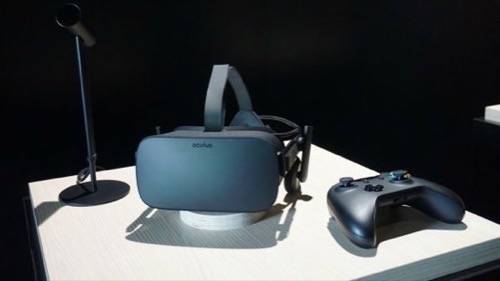
ND: PC gaming is going to be amazing on the Crescent Bay [prototype] and the [upcoming consumer Rift headset]. That’s what it was built to do. You put it in a room in your house, and it’s going to be amazing.
Mobile VR is not trying to best that, because we never will. We’re not plugged into A/C power; we don’t have a big computer; we’re not dedicating a room in your house. Oculus clearly understands that. They’re making a big bet on both sides of the equation with their product and our product; it’s what VR can be when it has smartphone-level ubiquity.
That’s the concept. Are we there yet? Of course we’re not there. Yet.
What can VR be at smartphone-level ubiquity? First and foremost, the most basic, cinematic virtual reality—like what we do with Milk VR. Everybody loves the 360 degree spherical video; it’s a wow moment for lots and lots of people. So that, first and foremost, we think is a big opportunity.
The other thing is that the Gear VR is a very powerful, high-quality, low-cost, professional simulation machine. So teaching people new skills, teaching lab skills in an environment that feels real, is potentially a very disruptive kind of innovation for businesses—how they train employees to do things, maybe even address skill gaps, and things like that. There’s some stuff going on with the Department of Education in that area.
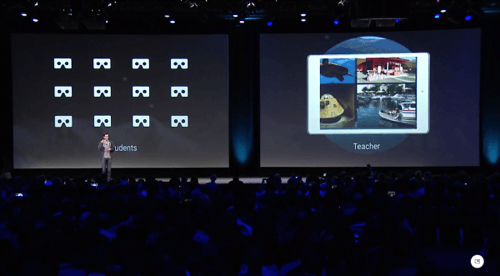
The third thing: Driving meaningful efficiencies into really high-volume industries, like real estate. Imagine that you live on the coast, and you’re buying a house. You’re spending all day driving around Los Angeles or New York City looking at houses…that’s not a great use of your time.
But if I can give you a super-accurate, to-scale, walk-around tour of three houses, right in your home, with a device that I can FedEx to you in a day, that’s going to be amazing. That’s what some companies are trying to do right now—give real estate agencies a way to show you a house and give you the walkthrough feel for real, without you having to get in your car and drive all around town.
The last thing: What are the apps and services that are native to the platform that make it so vital?
The analogy that I give is that Twitter and Instagram make amazing sense for mobile, but they’re not really PC products, so to speak. They’re designed for mobile. I keep wondering what the design for VR’s future experiences are that we haven’t imagined yet. I hope and believe that somebody will think of that.
We think that mobile VR and its amazing, huge developer community can unlock some of that.
Photos by Adriana Lee for ReadWrite; screenshots by ReadWrite










